Berlin is a city with a rich history of protest and resistance, shaping its democratic movements over the centuries. This engaging walking tour explores the key events and figures that have defined the city’s commitment to civil liberties. From the March Revolution of 1848 to the fall of the Berlin Wall in 1989, the tour takes visitors through significant sites, revealing stories of courage and resilience that have left an indelible mark on the city’s identity. Participants will discover how Berlin’s past struggles have informed its present-day struggles, leaving them with a deeper understanding of the city’s complex and dynamic relationship with dissent.
Key Points
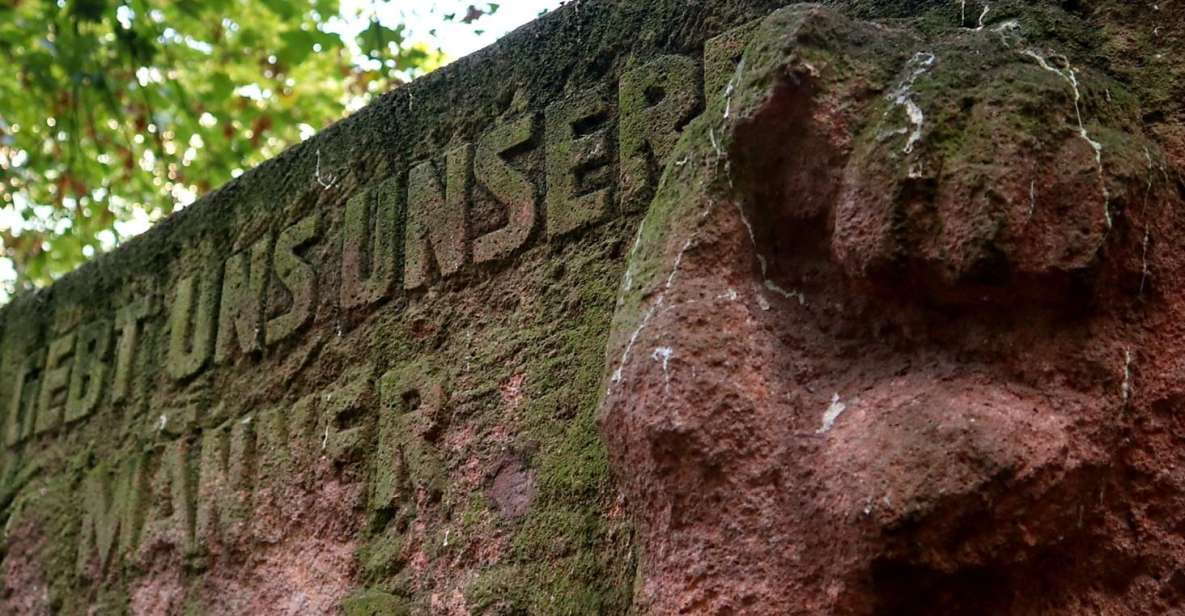
- The walking tour focuses on Berlin’s rich history of protest and resistance, from the March Revolution of 1848 to the fall of the Berlin Wall in 1989.
- Key sites visited include the Rotes Rathaus, Humboldt Forum, and TV Tower, where the guide shares stories of significant events and figures in Berlin’s democratic movements.
- The tour highlights the resilience and civil disobedience of Berliners, such as the 1943 Rosenstrasse protest against Nazi oppression and the peaceful 1989 demonstrations at Alexanderplatz.
- The tour provides an immersive experience in Berlin’s democratic values, with a focus on socialist architecture and the remnants of the Palace of the Republic.
- The tour is wheelchair accessible and concludes at the World Time Clock, where the guide shares stories from medieval times to the events of 1989.
Tour Overview and Details
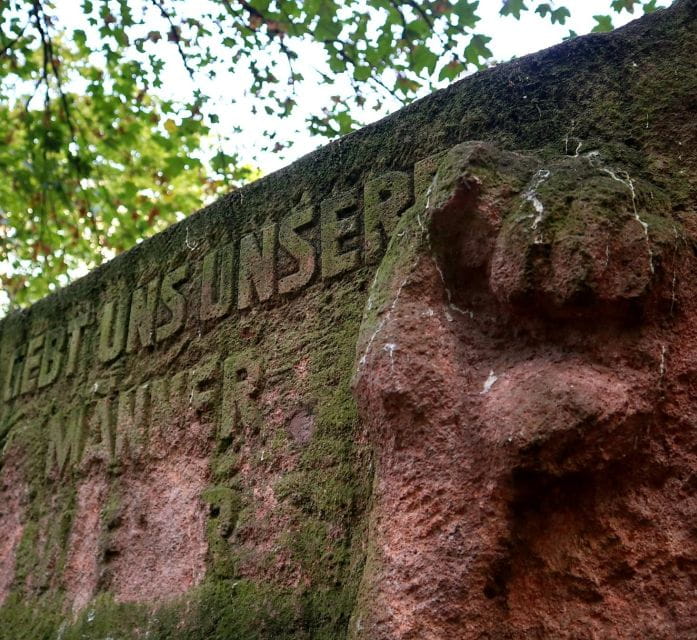
This walking tour offers a unique opportunity to explore Berlin’s history of protest and resistance. Priced from £16.86 per person, the 2-hour guided tour takes visitors through key sites associated with pivotal moments of democratic struggle, from medieval times to the fall of the Berlin Wall.
The tour starts at Rotes Rathaus, Alexanderplatz, and includes stops at the Humboldt Forum and the iconic TV Tower. Along the way, the live guide shares stories of courageous Berliners and the events that shaped the city’s rich history of protest and resistance.
The tour is wheelchair accessible, and participants can enjoy the shops, cafes, and restaurants of Alexanderplatz after the tour.
If you're enjoying exploring Berlin on foot, you'll love these other walking tours we recommend
Itinerary and Highlights
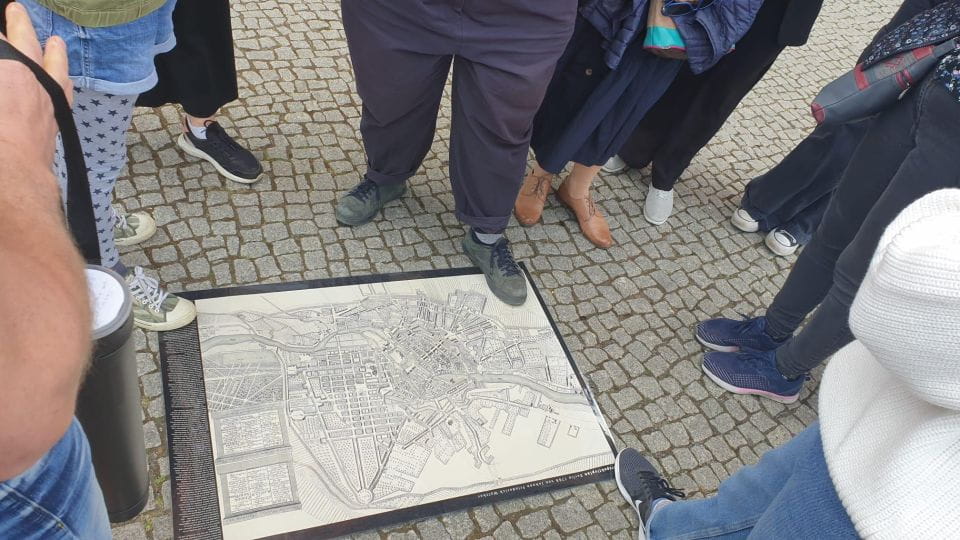
The tour begins at the Rotes Rathaus, Alexanderplatz, where the guide leads participants on a 1.5-hour journey through Berlin’s rich history of protest and resistance.
Along the way, the group will pass by the Humboldt Forum and the iconic TV Tower, spending around 20 and 10 minutes at each site, respectively.
The tour culminates at the World Time Clock, where the guide shares stories of courageous Berliners, from the medieval era to the fall of the Berlin Wall in 1989.
Highlights include the democratic movement leading to the March Revolution in 1848, a spontaneous demonstration resisting the Nazis, and the last remnants of the socialist Palace of the Republic.
Historical Context
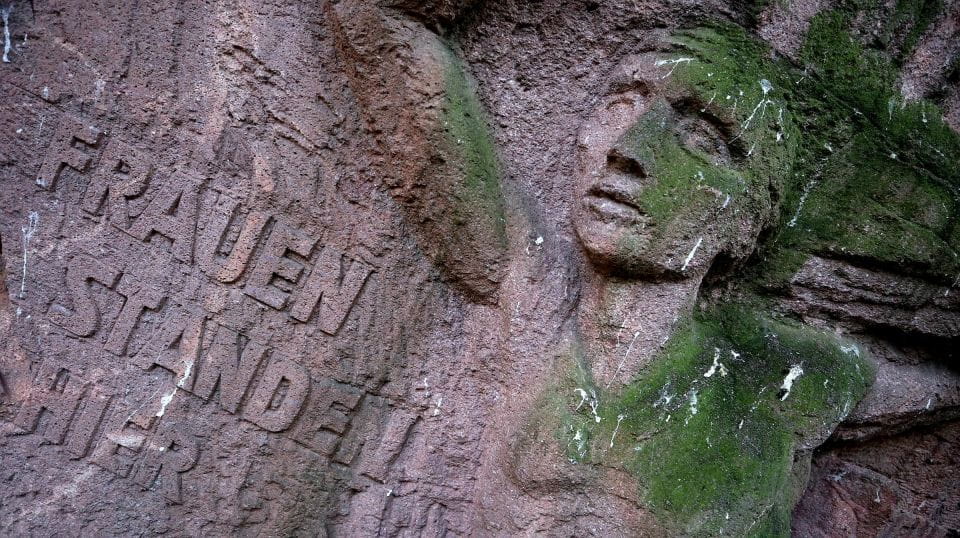
Alexanderplatz’s socialist architecture reflects Berlin’s long history of protests, dating back to citizens’ objections to the Berlin Palace in the 15th century, known as the ‘Berlin Indignation.’
In 1943, women bravely demanded the release of their Jewish husbands in the Rosenstrasse, the largest spontaneous demonstration against the Nazis during the Third Reich.
More recently, in 1989, the peaceful demonstrations at Alexanderplatz were instrumental in the fall of the Berlin Wall, with thousands participating in the dissent that led to the collapse of the socialist regime.
These powerful moments of resistance showcase Berlin’s unwavering spirit and commitment to democratic values, even in the face of oppression.
Meeting Point
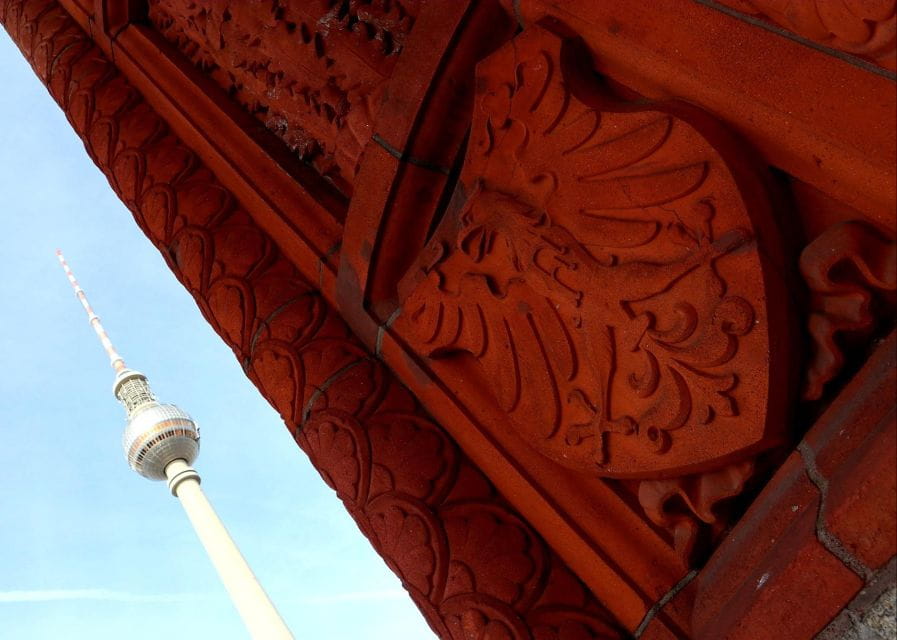
The tour meeting point is located outside the Rotes Rathaus U-Bahn station, directly opposite the Rotes Rathaus building. Look for the guide holding an orange umbrella.
This central location at Alexanderplatz provides easy access to the starting point of the walking tour. Participants can conveniently reach the meeting spot using the U-Bahn subway system.
Once gathered, the group will embark on a 1.5-hour guided journey through Berlin’s storied past, exploring sites of protest and resistance from medieval times to the fall of the Berlin Wall.
The meeting point has been strategically chosen to kickstart an immersive experience that delves into the city’s rich history of democratic movements and courageous acts of defiance.
Protest and Resistance Stories

From the central meeting point at Alexanderplatz, the walking tour explores Berlin’s rich history of protest and resistance, uncovering stories of courageous Berliners who stood up for democratic ideals from medieval times to the fall of the Berlin Wall.
Participants will learn about the ‘Berlin Indignation‘ in the 15th century, when citizens protested against the Berlin Palace. They’ll also discover the remarkable 1943 demonstration in Rosenstrasse, where women demanded the release of their Jewish husbands, the largest spontaneous protest during the Third Reich.
The tour culminates with the peaceful 1989 demonstrations at Alexanderplatz that led to the collapse of the Berlin Wall, a testament to the power of civil disobedience.
Democratic Movement in 1848
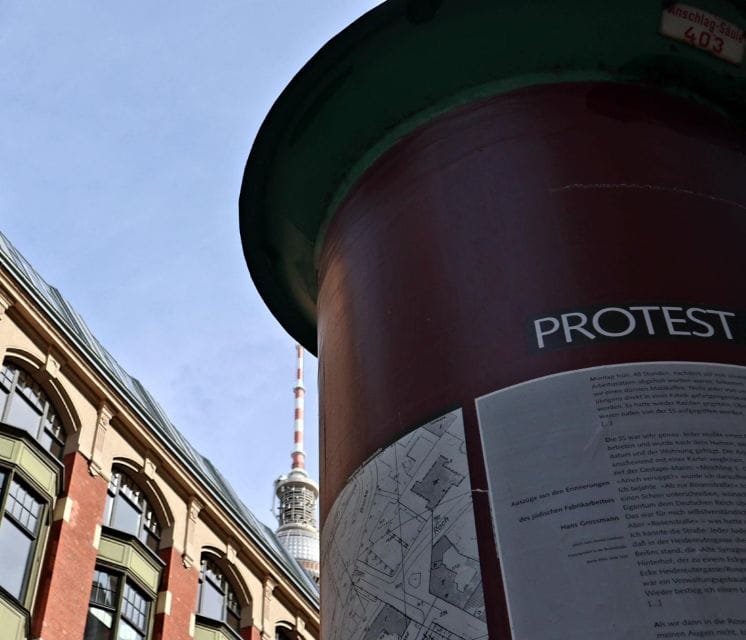
The walking tour also sheds light on the democratic movement that swept through Berlin during the March Revolution of 1848, as participants learn about the spontaneous demonstrations that took place in defiance of authoritarian rule.
Berliners courageously took to the streets, demanding greater political freedoms and representation.
The tour guides recount how this democratic uprising, inspired by the revolutions across Europe, led to the hotel of a liberal parliament and the drafting of a new constitution.
Though the revolution was ultimately suppressed, the events of 1848 marked a significant milestone in Berlin’s history, paving the way for future democratic struggles against oppressive forces.
Resisting the Nazis
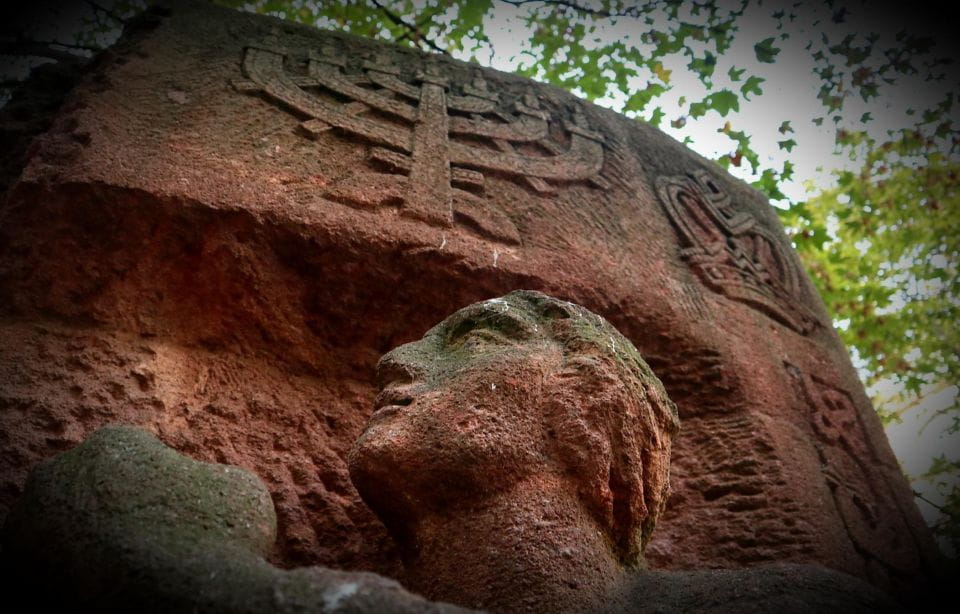
Amidst the oppression of the Nazi regime, Berliners staged a courageous act of resistance in 1943 when women protested the arrest of their Jewish husbands on Rosenstrasse, marking the largest spontaneous demonstration against the Third Reich.
Defying the authorities, these women gathered daily and refused to disperse until their loved ones were released.
Their bravery and determination forced the Gestapo to back down, and the majority of the arrested men were eventually freed.
This powerful display of civil disobedience stands as a testament to the indomitable spirit of the people of Berlin, who refused to be silenced even in the face of one of history’s most brutal regimes.
Fall of the Berlin Wall

Fueled by growing pro-democracy movements, the peaceful demonstrations at Alexanderplatz in 1989 ultimately led to the fall of the Berlin Wall, a pivotal moment that marked the end of East Germany’s socialist regime and the reunification of the city.
Protesters at the square demanded free elections, freedom of speech, and the right to travel abroad. This historic uprising inspired similar anti-government rallies across East Germany, culminating in the dramatic breaching of the Berlin Wall on November 9, 1989.
The euphoric scenes of East and West Berliners celebrating together symbolized the triumph of civil liberties over authoritarian control, paving the way for the reunification of Germany in 1990.
- Protesters at Alexanderplatz demanded free elections, freedom of speech, and the right to travel abroad.
- The 1989 demonstrations inspired similar anti-government rallies across East Germany.
- The dramatic breaching of the Berlin Wall on November 9, 1989 marked the end of East Germany’s socialist regime.
- The reunification of Germany in 1990 was a direct result of the fall of the Berlin Wall and the triumph of civil liberties.
Frequently Asked Questions
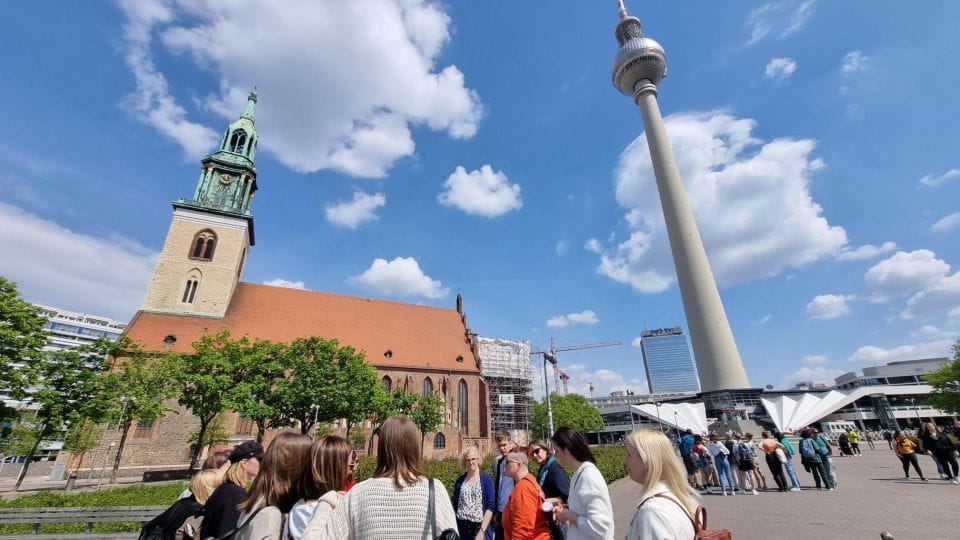
Can the Tour Be Customized for Private Groups?
Yes, the tour can be customized for private groups. The tour operator offers the flexibility to tailor the itinerary and content to meet the specific interests and needs of private groups upon request.
Are There Any Discounts Available for Students or Seniors?
Yes, the tour offers discounted pricing for students and seniors. Customers can save up to 15% by presenting valid student or senior ID at the time of booking. These reduced rates make the tour more accessible for these groups.
What Is the Best Way to Reach the Starting Point by Public Transport?
The best way to reach the starting point at the Rotes Rathaus U-Bahn station is to take the U-Bahn line U2, U5, or U8. The tour meeting point is located directly across from the Rotes Rathaus building.
Are There Any Other Historical Walking Tours Available in Berlin?
Yes, there are several other historical walking tours available in Berlin, covering topics like the Third Reich, Cold War Berlin, and the city’s architectural history. These provide opportunities to explore the rich cultural and political heritage of the German capital.
Can the Tour Be Conducted in Languages Other Than German?
The tour can be conducted in German, but the details don’t mention if it’s available in other languages. Travelers should check with the tour provider to see if English or other language options are offered.
Recap
This walking tour offers an insightful exploration of Berlin’s rich history of protest and resistance.
Visitors will discover the stories of courage and resilience that have defined the city’s commitment to civil liberties, from the March Revolution of 1848 to the peaceful demonstrations leading to the fall of the Berlin Wall in 1989.
It’s an engaging and informative experience that highlights Berlin’s pivotal role in shaping democratic movements.
More Walking Tours in Berlin
- Berlin: History of the Third Reich Guided Walking Tour
- East Berlin and the Wall: Walking Tour
- Karl-Marx-Allee Walking Tour: Berlins Socialist History
- Berlin Friedrichshain: Urban Walk of Grit and Gentrification
- RedTown Hall Christmas Market & City Highlights Walking Tour
- Berlin: Jewish Heritage Walking Tour
More Tours in Berlin
- Berlin: 2-Hour Premium Segway Tour
- Berlin: Hidden gems around the Gendarmenmarkt – Guided walking tour
- Berlin: Guided group tour of Kreuzberg 36, the alternative district
- Tour in Berlin from Warnemünde and Rostock Cruise Port
- Berlin: Guided Street Food Tour with Tastings
- Potsdam: Original steam ship Gustav from 1908. Coal-fired, boat tour
More Tour Reviews in Berlin
Not for you? Here's more things to do in Berlin we have recnetly reviewed
- Potsdam: 5-Hour-Tour “Parks & Palaces” from Berlin by VW-Bus
- Berlin: guided canoe | kayaktour
- Berlin: 3-Hour Guided Small Group Fat Tire E-Scooter Tour
- Rickshaw private driver, shared Guide Berlin Highlights
- Berlin: Madame Tussauds Happy Hour Ticket
- Berlin: Green City Guided Bike Tour
- VIP Warnemünde-Berlin: Private Shore Excursion with a Van
- Understanding Kreuzberg: The roots of local (sub)culture
- Tranfer with small or Bigger introduction Tour Berlin
- Private Tour – Highlights of Berlin for Families
- Berlin: Germany’s Very first Craft Beer Tour and Experience
- Private Highlights of Berlin Bike Tour
